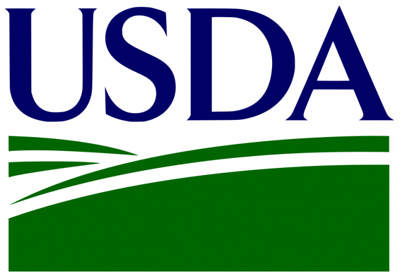Oct 22, 20202019 Organic Survey results show sales up 31% from 2016
The U.S. Department of Agriculture’s (USDA) National Agricultural Statistics Service (NASS) released on Oct. 22 the results of the 2019 Organic Survey, which show total sales of $9.93 billion in organic products, an increase of $2.37 billion, or 31% percent, from 2016.
There were 16,585 certified organic farms, a 17% increase from 2016, which accounted for 5.50 million certified acres, an increase of 9% over 2016.
California continued to lead the nation in certified organic sales with $3.60 billion, which is 36% of the U.S. total and four times that of any other state. It also led all states with 3,012 certified farms and 965,257 certified acres. Washington ($886 million), Pennsylvania ($742 million), Oregon ($454 million), and Texas ($424 million), round out the top five states for value of organic sales.
“The results of the 2019 Organic Survey show the continued growth of organic production in the United States,” said NASS Administrator Hubert Hamer. “These comprehensive and essential, national- and state-level data are valuable to the organic industry as well as agri-business infrastructure and programs that support the sector.”
The top sectors and commodities in 2019 were:
- Livestock and poultry products: $2.48 billion, up 12%
- Milk: $1.59 billion, up 14%
- Vegetables: $2.08 billion, up 27%
- Lettuce: $400 million, up 44%
- Fruits, tree nuts, and berries: $2.02 billion, up 44%
- Apples: $475 million, up 45%
- Livestock and Poultry: $1.66 billion, up 44%
- Broiler chickens: $1.12 billion, up 49%
- Field Crops: $1.18 billion, up 55%
- Corn for grain: $278 million, up 70%
Other top organic commodities with the greatest gains in value of sales from 2016 were spinach (52%), grapes (52%), cultivated blueberries (104%), raspberries (197%), and turkeys (68%).
Marketing practices in the certified organic farming sector showed that $2.04 billion in organic products were sold directly to retail markets, institutions, and local/regional food hubs. Another $300 million in organic products were sold directly to consumers at farmers markets, on-farm stores and stands, roadside stands or stores, u-pick, community supported agriculture farms, and online markets. Value-added products such as jam, wine, cheese, and meat, accounted for $727 million.
The survey also asked producers about plans for future production. Twenty-nine percent of farms plan to increase their level of organic production. More than 1,800 certified organic farms have 255,000 additional acres in the three-year transition period required for land to become certified as organic. An additional 710 farms not currently certified reported 61,000 acres of land transitioning to organic production.
The 2019 Organic Survey, a 2017 Census of Agriculture special study, is a census of all known U.S. farms and ranches with certified organic production in 2019, as well as those transitioning into organic production. Producers must meet the standards set out by the USDA Agricultural Marketing Service’s National Organic Program and be certified compliant by an approved agent of the program. Additional survey results as well as the results of previous NASS organic surveys are available at www.nass.usda.gov/organics or in NASS’s online Quick Stats database.
NASS is the federal statistical agency responsible for producing official data about U.S. agriculture and is committed to providing timely, accurate, and useful statistics in service to U.S. agriculture.
The following is a statement from the Organic Trade Association on USDA’s 2019 Organic Survey.
“Organic agriculture is continuing to grow in the U.S., according to the USDA’s just-released 2019 Organic Survey. The number of certified organic farms is increasing at a robust rate – up 17 pct to 16,585 farms compared to an 11 pct rise in the USDA’s last organic census in 2016. Since USDA’s first organic census in 2008, the number of certified organic farms in this country has risen by a significant 52 pct. Organic acreage has increased along with the number of organic farms, and is now estimated at 5.5 million acres, up 9 pct from 2016. There are 315,671 acres in transition to organic, and almost 30 pct of today’s organic farmers told USDA they plan to increase their organic acreage over the next 5 years.
Organic produces – organic production increased 29 pct in 2019 from 2016 levels — and consumers are buying organic. Farm gate sales of organic commodities rose to $9.9 billion in 2019, up 31 pct from 2016. That compares with $7.6 billion in 2016 and is more than triple the sales value in the first survey of 2008.
The Organic Trade Association thanks the USDA for its work in compiling the most up-to-date statistics on organic agriculture, but the numbers show that organic acreage is still less than 1 pct of our total farmland. This points to a real need for more technical, risk management and financial support for farmers wanting to transition to organic. USDA’s data bears out the continued – and urgent – need for greater support from the government to allow organic to continue its advancement.”















